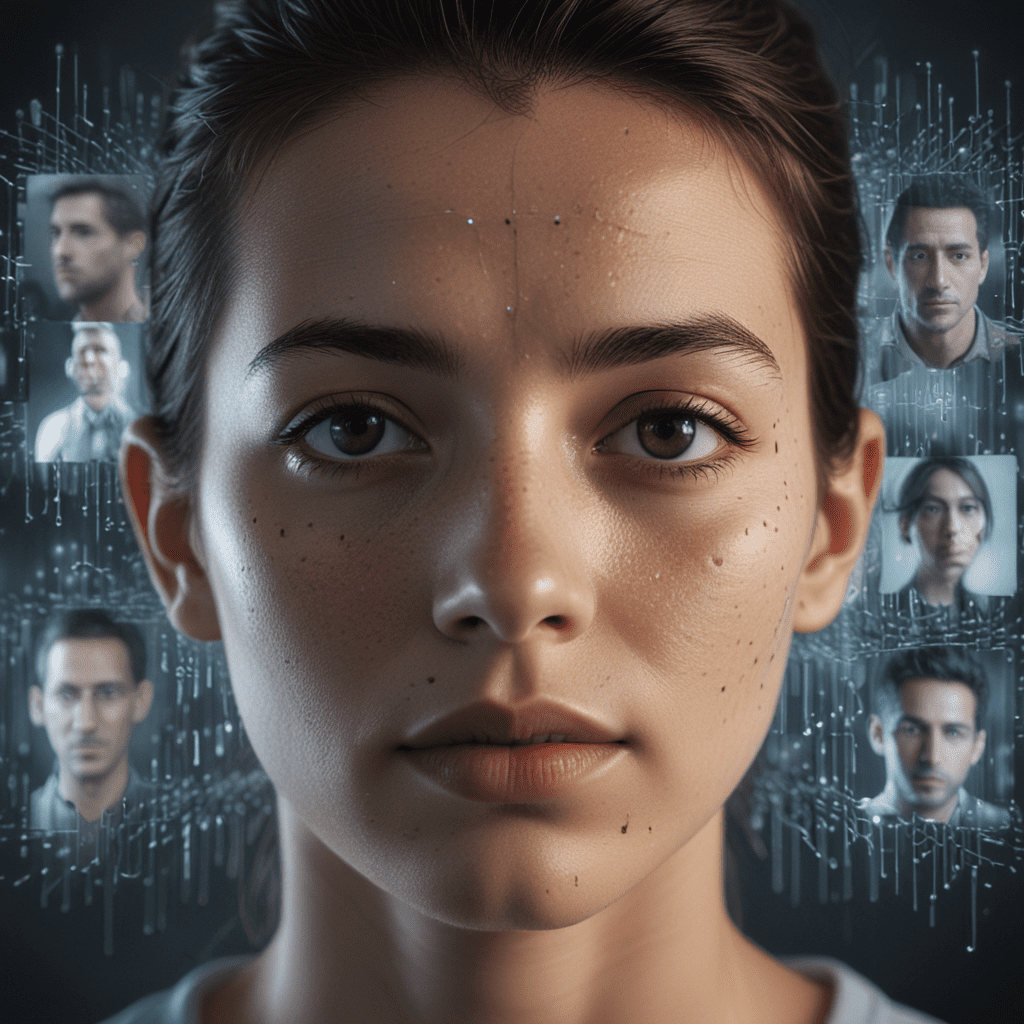
Introduction: The Rise and Impact of Facial Recognition
In the realm of modern technology, facial recognition has emerged as a transformative tool with far-reaching implications. This groundbreaking technology utilizes algorithms to analyze facial patterns, enabling the identification and verification of individuals with remarkable accuracy. As its applications continue to expand across diverse sectors, facial recognition presents a unique intersection between the advancement of technology and profound ethical considerations. This article delves into the intricate world of facial recognition, exploring its benefits and challenges, examining its ethical implications, and discussing the crucial need for regulation and oversight to safeguard privacy and human rights.
Biometrics and Facial Recognition Technology: How It Works
At the core of facial recognition systems lies the science of biometrics – the study of unique physical or behavioral characteristics used for identification purposes. Facial recognition technology employs sophisticated algorithms that map the contours of a person's face, extracting distinct features such as the distance between the eyes, the shape of the nose, and the curvature of the jawline. These biometric data points are then stored in a database, creating a digital fingerprint for each individual. When a new face is encountered, the system compares it to the stored templates, searching for a match. This process allows for rapid and reliable identification, making facial recognition a powerful tool in various applications.
Benefits of Facial Recognition: Enhanced Security and Convenience
The advent of facial recognition technology has brought forth numerous advantages, particularly in the realm of security and convenience. In law enforcement, facial recognition systems have proven invaluable for identifying suspects, investigating crimes, and preventing fraud. Airports and border crossings have adopted the technology to streamline passenger screening, reducing wait times and enhancing security measures. Additionally, facial recognition offers unparalleled convenience in everyday life, enabling seamless access to devices, mobile payments, and personalized services. By leveraging the power of biometrics, facial recognition technology empowers individuals while bolstering security and efficiency.
Challenges to Privacy and Civil Rights: The Potential for Misuse
Alongside the undeniable benefits of facial recognition, concerns have emerged regarding its potential impact on privacy and civil rights. The widespread deployment of facial recognition systems raises questions about the collection and storage of vast amounts of biometric data. Without proper safeguards, this data could be vulnerable to misuse, leading to unwarranted surveillance, discrimination, and even identity theft. Moreover, the use of facial recognition in law enforcement raises ethical concerns about potential biases and the erosion of anonymity, particularly in the context of protests and demonstrations. Striking a balance between security and privacy is paramount to ensure that the benefits of facial recognition do not come at the expense of fundamental human rights.
Law Enforcement Applications: Ethical and Legal Considerations
The integration of facial recognition technology into law enforcement practices has sparked intense debate. While it offers undeniable advantages in crime prevention and investigation, ethical and legal considerations must be carefully weighed. The use of facial recognition for mass surveillance or indiscriminate data collection raises concerns about privacy violations. Additionally, the accuracy and reliability of facial recognition systems are crucial factors to consider, as false identifications can have severe consequences for individuals. Establishing clear guidelines and oversight mechanisms is essential to ensure that facial recognition is used responsibly and ethically in law enforcement applications, prioritizing the protection of civil rights and due process.
6. Commercial Uses and Surveillance Concerns: The Blurred Lines
The commercial applications of facial recognition technology extend far beyond law enforcement. Its use in retail stores, public spaces, and even social media platforms raises concerns about the potential for intrusive surveillance. Facial recognition-enabled cameras can track individuals as they navigate public areas, leading to apprehensions about the erosion of anonymity and the potential for targeted advertising and profiling. Striking a balance between the convenience offered by commercial uses of facial recognition and the preservation of privacy is a complex challenge that requires careful consideration of ethical implications.
7. International Perspectives on Facial Recognition: Balancing Privacy and Security
The adoption and regulation of facial recognition technology vary significantly across different countries. Some nations have implemented strict regulations to protect privacy, while others have embraced its use with fewer restrictions. The European Union's General Data Protection Regulation (GDPR) imposes stringent data protection requirements, including the need for informed consent for the collection and processing of biometric data. In contrast, China has implemented extensive facial recognition systems with minimal oversight, raising concerns about government surveillance and the suppression of dissent. Understanding the diverse international perspectives on facial recognition is crucial for fostering a balanced and responsible approach to its deployment.
8. The Role of Regulation and Oversight: Safeguarding Privacy
The ethical and legal implications of facial recognition technology necessitate robust regulation and oversight to safeguard privacy and civil rights. Governments and policymakers have a responsibility to establish clear guidelines and enforce standards that protect individuals from the misuse of their biometric data. Independent oversight bodies can monitor the use of facial recognition, ensuring compliance with regulations and addressing any concerns raised by the public. Striking a balance between innovation and privacy requires a proactive approach to regulation, ensuring that the benefits of facial recognition do not come at the expense of fundamental human rights.
9. Future Trends and Ethical Implications: Innovation vs. Human Rights
As facial recognition technology continues to evolve, new applications and ethical considerations will arise. The integration of facial recognition with other technologies, such as artificial intelligence and wearable devices, raises concerns about the potential for deepfakes and other forms of identity fraud. The use of facial recognition in autonomous vehicles and smart cities also presents ethical dilemmas related to the privacy of individuals and the erosion of anonymity. Navigating these future developments requires ongoing dialogue and collaboration between technologists, policymakers, and ethicists to ensure that innovation is tempered with a deep respect for human rights and privacy.
10. Conclusion: Navigating the Intersection of Technology and Human Rights
Facial recognition technology stands at the crossroads of innovation and human rights, presenting both immense opportunities and significant challenges. Its potential for enhancing security and convenience cannot be denied, but it must be tempered with a commitment to safeguarding privacy and civil liberties. Striking a balance between these competing interests requires careful consideration of ethical implications, robust regulation, and ongoing dialogue between stakeholders. As facial recognition continues to evolve, it is imperative that we navigate this intersection with wisdom and foresight, ensuring that the benefits of technology do not come at the expense of our fundamental human rights.
FAQ
What is the difference between facial recognition and facial detection?
Facial detection is the process of identifying the presence of a face in an image or video, while facial recognition is the process of identifying a specific individual based on their facial features.
How accurate is facial recognition technology?
The accuracy of facial recognition technology depends on various factors, including the quality of the image, the lighting conditions, and the diversity of the population being recognized. Generally, facial recognition systems have a high accuracy rate, but they can struggle with factors such as facial expressions, makeup, and aging.
Is facial recognition technology biased?
Studies have shown that facial recognition technology can exhibit biases based on race, gender, and other demographic factors. This is due to the fact that facial recognition algorithms are trained on large datasets that may not be representative of the entire population.
How can I protect my privacy from facial recognition technology?
There are several steps you can take to protect your privacy from facial recognition technology, including limiting your use of social media, being aware of the privacy policies of companies that collect your facial data, and using privacy-enhancing technologies like face shields or makeup.
What are the ethical implications of facial recognition technology?
The ethical implications of facial recognition technology include concerns about privacy, surveillance, and discrimination. It is important to carefully consider the potential risks and benefits of facial recognition technology before deploying it on a wide scale.


